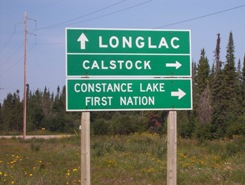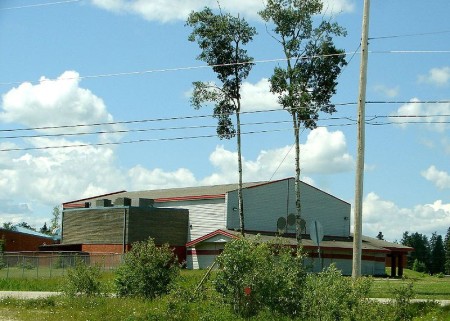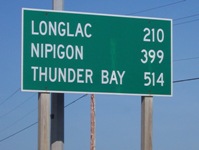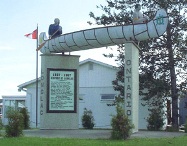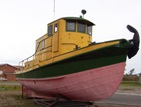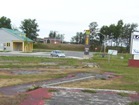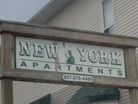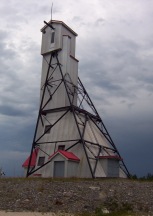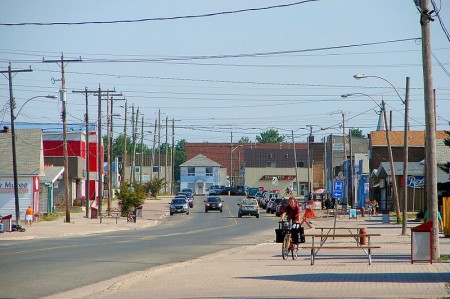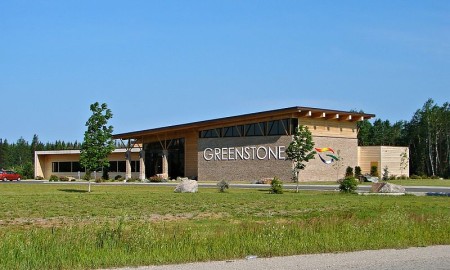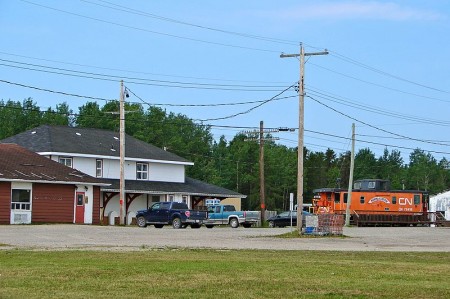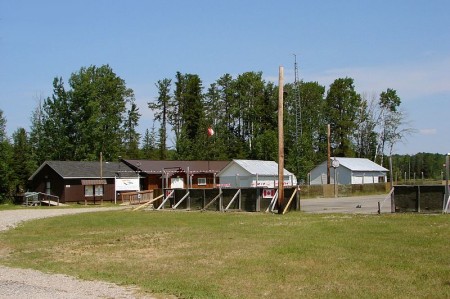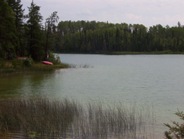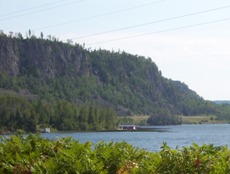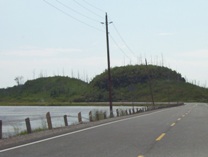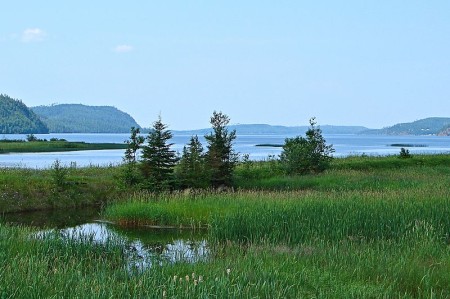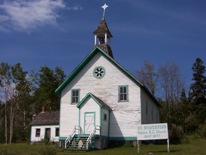Eighty kilometres west of Geraldton is Beardmore, the “Gateway to Lake Nipigon.”

Not a pride parade float, it’s the welcome to Beardmore sign!
Beardmore started out as a flag station on the CNR before finding itself in the middle of the Lake Nipigon gold ‘rush’ in the 1930s. The town faced ‘rapid expansion’ after gold was found on the Sturgeon River, as evidenced by the Timmins-style hotels that unfortunately no longer serve as watering holes for the community.
Today, it’s a town of about 200 people focusing on forestry and serving as a take-off point for camping and boating near Lake Nipigon. So it’s pretty small, and pretty quiet. But what Beardmore lacks in amenities it makes up in uniqueness. I liked Beardmore.
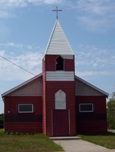
A church in Beardmore – completely unrelated to the text that appears above or below this photo
Beardmore is known for Vikings.
The Beardmore Relics, which were purported to be a cache of Viking artifacts, were found near the town in the early 1930s.
The relics – including an old sword, and axe, and a piece of a shield – were supposedly found while a prospector was panning for gold, and for a time were claimed as evidence that Vikings explored much further than Vinland, Markland, and Helluland while they were in North America, and that they explored parts of northern Ontario and maybe even Minnesota.
The Royal Ontario Museum purchased the relics and displayed them for about twenty years until they were forced to hold a public enquiry as to whether the relics were actually found in Beardmore, or imported by Scandinavian settlers desperate for a historic taste of home and passed off as a discovery in an elobarate hoax.
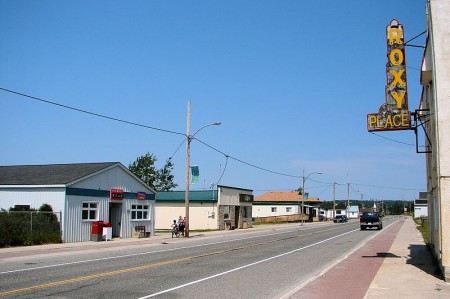
Highway 11 as it runs through Beardmore, Ontario. Note the lounge-hotel at right, once a fixture of every town in northern Ontario. (Photo: User P199 at Wiki Commons.)
In the “some big weird thing” sweepstakes Beardmore doesn’t disappoint. Beardmore is also home to what it claims is the world’s largest snowman. Does the title still count even though he’s not made of snow? During the summer, the apparently nameless snowman sports sunglasses and fishing rod to signify that anything you can do, a snowman can do way cooler.

Neither rain, nor sleet, nor heat, nor hail will keep Beardmore’s snowman from standing watch over the community
The town sign isn’t just a normal wooden sign. They’ve spelled out Beardmore on railroad ties in rainbow-coloured letters that you can’t miss. The town also has these nice new ‘Welcome to Beardmore’ pennants hanging from the lampposts.
This is what I love about Highway 11 communities. They have pride. They have spunk. They have a sense of community. And this sense of community means that they’re not afraid to try.
Sometimes when you’re from a larger place you forget that, no matter where you’re from or where you live, everyone has some sense of pride in their hometown. Beardmore is a place that reminds you of this.
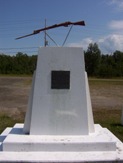 Today Beardmore is a forestry and outfitting town, with a baseball field, a church, some gas stations and about 40 or 50 houses. There is a Legion in town too. Beardmore is the only real stop between Geraldton and Lake Nipigon, a 170 kilometre journey.
Today Beardmore is a forestry and outfitting town, with a baseball field, a church, some gas stations and about 40 or 50 houses. There is a Legion in town too. Beardmore is the only real stop between Geraldton and Lake Nipigon, a 170 kilometre journey.
Beardmore is also where renowned artist Norval Morrisseau first showed his work to a Toronto exhibitor.
